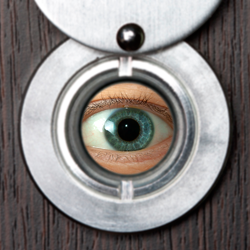 |
 Candy Adams,
Candy Adams,
CTSM, CME,
CEM, CMP, CMM,
is an independent exhibit-management
consultant, trainer, speaker, writer, and an Exhibitor conference
faculty member.
CandyAdams
@BoothMom.com
|
| |
 xhibit managers face many challenges when it comes to writing a new-build request for proposal (RFP): The process lacks an official exhibit-industry template dictating what information to include, it's not done on a regular basis or often enough for exhibit managers to be comfortable managing it, and it doesn't have a succinct format. In other words, the industry would have you believe that there's no right or wrong way to write an RFP. That
may be true; however, there is such
a thing as a good RFP and a bad RFP. The former will help you get the exhibit you want; the latter will leave you with a design that completely missed the mark. xhibit managers face many challenges when it comes to writing a new-build request for proposal (RFP): The process lacks an official exhibit-industry template dictating what information to include, it's not done on a regular basis or often enough for exhibit managers to be comfortable managing it, and it doesn't have a succinct format. In other words, the industry would have you believe that there's no right or wrong way to write an RFP. That
may be true; however, there is such
a thing as a good RFP and a bad RFP. The former will help you get the exhibit you want; the latter will leave you with a design that completely missed the mark.
To write a good RFP, you need to provide your designer and/or exhibit house with enough information to develop a booth concept that truly meets your needs. Your complete RFP should include information on the following categories: company background, corporate exhibit program, service requirements, design requirements, budget information, and timeline for the project.
Company Background
The RFP should tell the exhibit designer about your company and its overall identity. To convey this information, attach your company's latest annual report, marketing and sales literature, current advertising campaign, and a press kit, and make sure you also provide the URL to your company's website. If your company happens to have an internal style guide that dictates rules for logo,
tagline, font, and color use, include that information as well.
Describe the different industries and markets to which your company provides products and services, including demographic and psychographic information (if you have it). Also include information about your company's market position, volume, and share, and any industry trends that could affect its position within
the market. Explain your products
and services, your company's typical
sales cycle, and your past exhibit promotions. In addition to providing information about your company, also
provide a bit of competitive intelligence,
listing your competitors, their comparative market share, and your key differentiators. Depending on the sensitive nature of the information you include, you may want to require a nondisclosure agreement that forbids RFP respondents from sharing details of the documents with anyone.
Corporate Exhibit Program
Thoroughly explain your corporate exhibit program from both a strategic and logistic level. Provide a statement outlining the role trade shows play in your company's overarching strategic marketing plan, and include trade show objectives and the specific
requirements of your show schedule.
Prioritize your objectives so the exhibit house knows what you want the design to accomplish. Trade show objectives can be related to sales (generate a high volume or high quality of leads, meet with current customers or prospects, etc.), products (introduce a new product or upgrade, demonstrate the breadth of a product line, etc.), communication (spark product
interest, educate prospects and clients, generate press or media coverage, increase brand awareness, enhance brand presence, etc.), and distribution (recruit distributors, provide dealer support, etc.).
If there are shows on your calendar with objectives that deviate from your typical objectives, single them out in your RFP. Explain how, if at all, the exhibit needs to change from show to show, depending on your target audience. Are most of your shows targeted at horizontal or vertical markets? Does the exhibit need to be flexible, with multiple configurations for different-sized booth spaces? Will the exhibit be used in any other settings, such as in your corporate lobby, or at shareholders meetings, hospitality events, or sales meetings?
Service Requirements
Specify which services you need
the exhibit house to provide. Services available through most full-service exhibit houses generally include initial design, construction, in-house graphics production, turnkey services, on-site supervision by your account executive or construction supervisor
(generally included in the cost of setup at the exhibit's debut show), material handling while in the exhibit house's warehouse, rental of ancillary
furnishings, and exhibit-property inventory control and storage.
Ask for a rate sheet of the pricing structure for each of the exhibit house's services. This will tell you which services are billed at a flat rate, hourly rate, percentage markup, or by weight or volume. Also ask what is handled in-house and what is subcontracted to other vendors. If you require a custom booth and the exhibit house doesn't maintain a shop, find out who its vendors are and where they are located.
Design Requirements
Briefly outline the strengths and weaknesses of past exhibits, pointing out any elements that you want to repeat in the new build. Indicate if you have existing properties that you'd like to integrate into a new design, such as a hanging sign or reception counter. Many exhibit houses are masters of disguise and can save you money by upgrading or refurbishing pieces of your current exhibit.
Identify any atypical requirements imposed by show management at the shows you exhibit at, such as ceiling height; electrical, fire, and lighting codes; and sightline rules. These requirements vary from show to show, often based on the type of venue.
Explain any specific corporate mandates for the design of the exhibit, and identify the emotions you want attendees to experience when they see and/or enter your exhibit. Do you want sharp and angular forms that say, "We're strong and stable," or soft and curved shapes that say, "We're friendly, come on in"? Do you want an open feel or the mystique of a more enclosed environment?
Provide details about each of the components your booth needs to contain. Also specify what information you would like the exhibit company to include in its proposal. I typically ask for renderings of the exhibit, a detailed description of its overall
appearance, a list and samples of
the materials and finishes that will
be used, a list of components of the
basic exhibit structure (including exterior skin, mode of fasteners,
and any creative features used in
the construction of the booth), the
estimated weight of exhibit properties and crates, and information regarding the durability and refurbishment needs of the property.
Budget Information
Some exhibit managers believe that revealing your total budget gives designers free reign to go hog wild up to the budget number you provide. Others believe that the exhibit houses need all the information they can get to provide you with the best design. I lean more toward full disclosure of budget information, or at least giving a 90-percent figure so I have some money left for last-minute requests and upgrades. You can also provide a budget range. According to the Exhibit Designers and Producers
Association's 2011 Economic Survey, the average cost for an in-line exhibit is $144 per square foot, and a single-tier island exhibit will cost you about $160 per square foot.
Since very few RFPs are evaluated without regard for price, it's probably unfair to expect an exhibit house to design a booth for you without giving it any idea how much money you're realistically willing and able to spend. Bottom line, be upfront and indicate if your analysis of the proposals and final selection will be based primarily on the exhibit's design, functionality, or price. And since you'll be comparing different designs with different price tags, request a line-item budget to avoid an apples-to-oranges situation.
To avoid this problem, also be specific about the items and services you want included for consideration in the final proposal, such as exhibit design and production drawings, construction,
(including labor, materials, and fees), drawings and setup instructions for multiple configurations, an on-site
exhibit preview, project management,
exhibit elements (towers, meeting rooms, walls, storage areas, etc.), furnishings, hanging signs, flooring, graphics, lighting, audiovisual
equipment, computer equipment, crates and/or cases, a gang box and supplies, taxes on materials and labor, exhibit-house supervision of setup at the first show (and cost of subsequent on-site supervision), installation and dismantle, ongoing cost of ownership (including general maintenance/refurbishment, storage, warehouse handling, graphics upgrades, etc.), and so on.
When it comes to calculating the long-term costs of the proposed exhibit design, request an estimate of the total number of hours for installation-and-dismantle (I&D) labor. In addition
to I&D requirements, there may be specialized labor and equipment hours to consider, depending on
the design.
Also ask about payment terms and when deposits and progress payments will be due, and find out the costs of each of your ownership options, which may include renting, renting with an option to buy, leasing,
and purchasing outright. Your accounting department will be able to guide you through this part of your RFP, depending on whether it wants to capitalize the exhibit properties or expense them. If capitalized, you'll need to work with accounting to
determine the "life" of your booth
for depreciation purposes, which is usually three to five years.
Timeline
Your RFP should include a timeline of upcoming dates, such as your proposal deadline (don't forget to specify to whom completed proposals are to be submitted), exhibit-house presentation dates, the decision date for choosing the proposal winner, estimated dates for contract negotiations and signing, deposit dates, project-progress meeting dates, the final walk-through date, and estimated ship date, show setup dates, and hours and dates of the show at which the new exhibit will make its debut.
Ethical Considerations
Give all bidders the same information,
the same time frame, and an equal chance to win your business. Unless stated otherwise in your RFP, bidders are generally given only one opportunity to respond to the RFP with their best design and price; accepting rebids from select bidders isn't fair to the various other companies involved in your RFP process.
After you have selected an exhibit house, be courteous and notify those who didn't win your business. If they ask, let them know in general terms why they didn't win, such as initial cost, design, materials, flexibility to various configurations, or cost effectiveness to maintain. This information may help them hone their proposal for the next exhibitor.
Finally, remember that the creative ideas generated by designers are copyrighted. An exhibit company's designs are its intellectual property, and stealing concepts from unaccepted proposals is unethical. I once heard the phrase "R&D" used when a client wanted to misappropriate some of the unusual elements of a losing exhibit house's design. When I questioned what this had to do with "research and development," I was told R&D in this context stood for "rob and duplicate." Fortunately, I was able
to resolve the issue by negotiating payment for design rights on the
elements we wanted to transfer to the winning exhibit house.
When it comes to your RFP, there's no such thing as including too much information. And while I've gone over the basic categories here, I've also put together a comprehensive template outlining everything you should include. An old saying comes to mind whenever I work on RFPs: You'll only get out of it what you put into it.e
|





 xhibit managers face many challenges when it comes to writing a new-build request for proposal (RFP): The process lacks an official exhibit-industry template dictating what information to include, it's not done on a regular basis or often enough for exhibit managers to be comfortable managing it, and it doesn't have a succinct format. In other words, the industry would have you believe that there's no right or wrong way to write an RFP. That
may be true; however, there is such
a thing as a good RFP and a bad RFP. The former will help you get the exhibit you want; the latter will leave you with a design that completely missed the mark.
xhibit managers face many challenges when it comes to writing a new-build request for proposal (RFP): The process lacks an official exhibit-industry template dictating what information to include, it's not done on a regular basis or often enough for exhibit managers to be comfortable managing it, and it doesn't have a succinct format. In other words, the industry would have you believe that there's no right or wrong way to write an RFP. That
may be true; however, there is such
a thing as a good RFP and a bad RFP. The former will help you get the exhibit you want; the latter will leave you with a design that completely missed the mark. 


